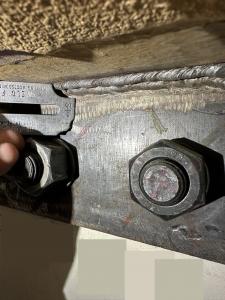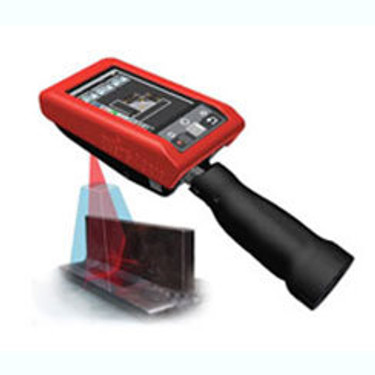A Comprehensive Overview to Welding Evaluation: Comprehending Specifications, Techniques, and Finest Practices for Quality Assurance
Welding inspection plays a pivotal function in making sure the structural honesty and safety and security of bonded elements, requiring a comprehensive understanding of sector requirements such as those established by AWS and ASME. As we check out these critical components, it comes to be obvious that the implications of welding assessment extend far past conformity, inviting a better examination of exactly how these procedures form industry requirements and techniques.
Importance of Welding Assessment
Welding examination plays an important duty in guaranteeing the honesty and safety and security of welded structures. It is a necessary procedure that verifies that welds comply with predefined specifications, which is important in various industries, including building and construction, auto, and aerospace. By conducting thorough assessments, prospective flaws such as cracks, insufficient combination, and porosity can be determined early, preventing disastrous failings that could result in accidents or expensive repair work.
The relevance of welding inspection extends past simple compliance with regulations; it likewise fosters count on with stakeholders. Clients and regulatory bodies expect guarantee that the frameworks they count on are constructed to stand up to functional anxieties. Effective welding inspection techniques add to long-term resilience and efficiency of the frameworks, eventually leading to reduced maintenance prices.
Furthermore, welding evaluation advertises a society of top quality within companies, motivating adherence to best techniques and continual enhancement. By integrating inspection procedures into the welding workflow, firms can improve their credibility and develop themselves as leaders in top quality assurance. Finally, the value of welding evaluation depends on its capacity to secure lives, make sure structural integrity, and support industry criteria, making it a crucial element of welding operations.
Trick Industry Requirements
Guaranteeing conformity with crucial market criteria is important for keeping the high quality and safety and security of welded structures. Numerous organizations develop these standards to advertise best techniques in welding and assessment - Welding Inspection Gilbert Arizona. Amongst the most acknowledged are the American Welding Society (AWS) and the American Culture of Mechanical Engineers (ASME), which offer thorough guidelines and requirements for welding procedures and evaluation standards
AWS requirements, such as AWS D1.1 for architectural welding, rundown demands for materials, style, and screening to guarantee the integrity of welds. Likewise, ASME codes, including ASME Area IX, govern the certification of welders and welding procedures, ensuring regular quality in commercial applications. Globally, the ISO 3834 typical stresses quality demands for blend welding, supplying a structure for companies to show compliance with worldwide finest practices.
Compliance with these criteria not just improves the reliability of welded frameworks however additionally mitigates dangers associated with structural failures. In addition, adherence to industry criteria is often a prerequisite for regulative authorizations and can substantially influence project specs. Eventually, understanding and executing these key criteria are necessary for reliable welding inspection and quality control.
Inspection Techniques Review
Efficient welding inspection counts on a range of techniques created to evaluate the top quality and stability of welds. These techniques can be generally categorized right into harmful and non-destructive screening (NDT) methods. Non-destructive screening techniques, which are extensively chosen in the sector, enable the assessment of welds without endangering the integrity of the product.

Among one of the most commonly made use of NDT techniques are visual inspection, ultrasonic testing, radiographic screening, and magnetic particle screening. Aesthetic evaluation is usually the very first action in the assessment procedure, enabling assessors to recognize surface flaws and assess weld grain accounts. Ultrasonic testing uses high-frequency acoustic waves to find interior defects and determine the density of welds. Radiographic screening involves making use of X-ray or gamma-ray imaging to reveal interior issues, while magnetic particle screening is effective for identifying surface and near-surface interruptions in ferromagnetic materials.
Each technique has its own advantages and limitations, making it important for inspectors to choose the most suitable method based on the certain demands of the job, the materials involved, and the criticality of the welds being examined. This careful selection upholds and makes certain comprehensive assessments safety and security and top quality criteria in welding procedures.
Common Issues and Their Effects
A detailed understanding of typical problems in welds is crucial for keeping structural integrity and safety and security in welded building and constructions. Welding flaws can considerably compromise the mechanical residential or commercial properties of the joint, bring about failures that could threaten both personnel and devices.
Common issues include porosity, which shows up as small gas pockets entraped in the weld metal, damaging the general framework. Splitting is another common concern, typically resulting from fast air conditioning or incorrect joint design, causing stress focus that can lead to tragic failures. Incomplete blend occurs when the weld steel stops working to properly bond with the base product, producing weak factors that may bring about splitting up under load.
Other significant defects include damaging, where the weld grain deteriorates the base metal, and slag additions, which can prevent the weld's strength. Each of these problems has certain effects; as an learn the facts here now example, porosity can decrease ductility, while splitting straight influences tensile strength. Determining and recognizing these defects during evaluation is necessary for implementing corrective procedures and ensuring conformity with sector criteria, inevitably guarding the architectural integrity of welded settings up.
Ideal Practices for Quality Guarantee
Applying ideal techniques for quality control in welding procedures is vital for accomplishing ideal results and reducing flaws. One essential technique is use this link the facility of clear welding treatments that adhere to market requirements and specs. These treatments need to include detailed instructions regarding material selection, joint prep work, and welding techniques to ensure uniformity and top quality.
Routine training and accreditation of welding workers are also vital. Competent welders that recognize the relevance of high quality assurance are most likely to create sound welds. In addition, applying a durable examination program, consisting of both non-destructive and aesthetic screening (NDT), can assist determine problems early while doing so, permitting timely corrective activities.

Finally, cultivating a culture of top quality within the company encourages workers to prioritize high quality in their job. By sticking to these ideal practices, organizations can enhance the stability of their welding look at this now processes, eventually causing boosted item top quality and lowered costs related to rework and repairs.

Final Thought
In final thought, welding inspection plays a vital duty in making sure the stability and safety of bonded frameworks. By executing best techniques, organizations can enhance integrity, lessen maintenance prices, and grow count on among customers, eventually contributing to effective welding procedures.
Furthermore, welding inspection advertises a culture of top quality within organizations, urging adherence to best techniques and constant improvement. In verdict, the relevance of welding inspection lies in its ability to secure lives, ensure architectural reliability, and promote market criteria, making it a crucial element of welding procedures.
Among the most acknowledged are the American Welding Culture (AWS) and the American Society of Mechanical Designers (ASME), which provide thorough guidelines and specifications for welding processes and assessment standards.
Ultimately, understanding and applying these crucial standards are vital for efficient welding inspection and high quality guarantee.
Effective welding evaluation counts on a variety of techniques created to analyze the quality and stability of welds.